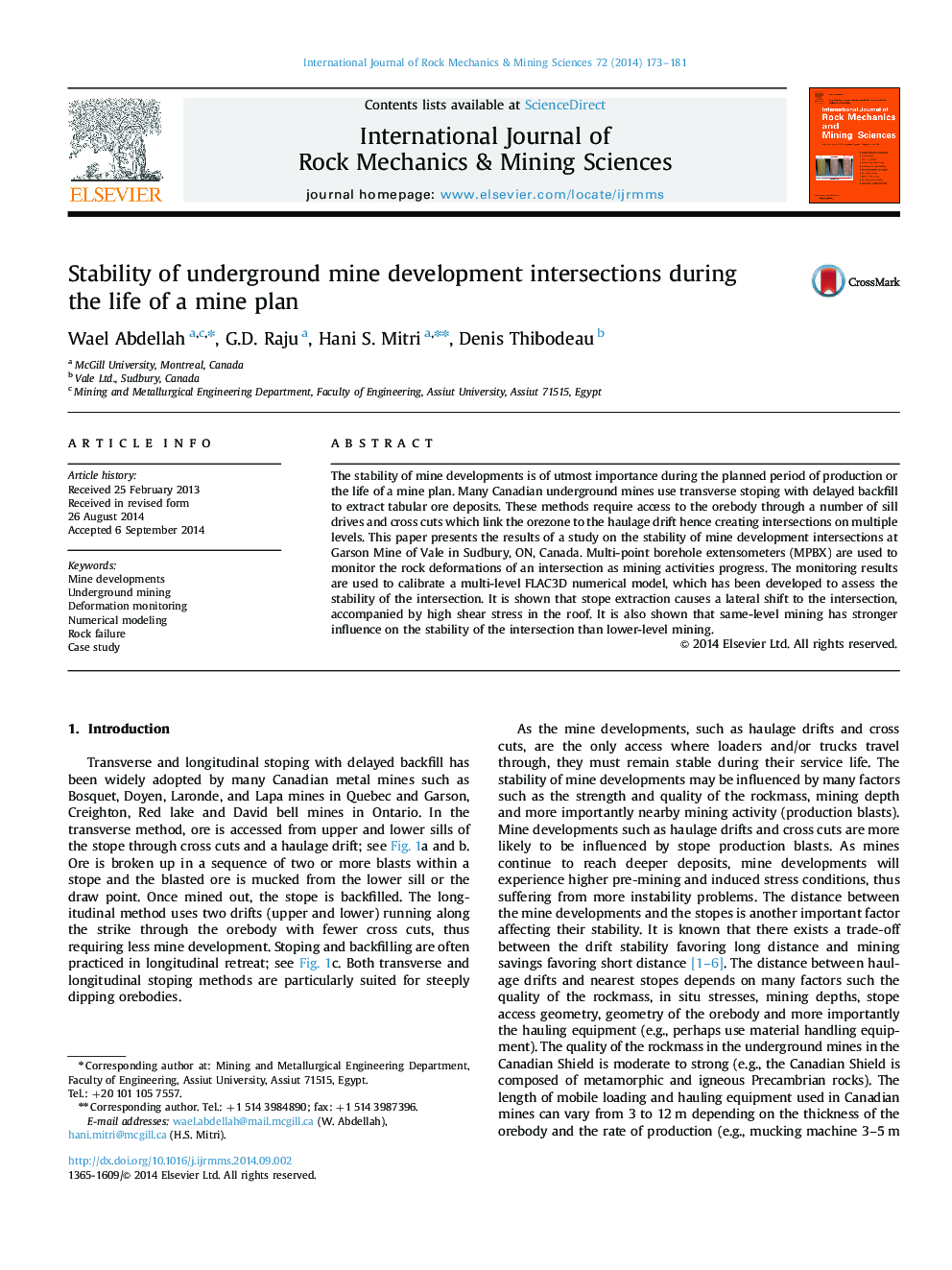| Article ID | Journal | Published Year | Pages | File Type |
|---|---|---|---|---|
| 7206643 | International Journal of Rock Mechanics and Mining Sciences | 2014 | 9 Pages |
Abstract
The stability of mine developments is of utmost importance during the planned period of production or the life of a mine plan. Many Canadian underground mines use transverse stoping with delayed backfill to extract tabular ore deposits. These methods require access to the orebody through a number of sill drives and cross cuts which link the orezone to the haulage drift hence creating intersections on multiple levels. This paper presents the results of a study on the stability of mine development intersections at Garson Mine of Vale in Sudbury, ON, Canada. Multi-point borehole extensometers (MPBX) are used to monitor the rock deformations of an intersection as mining activities progress. The monitoring results are used to calibrate a multi-level FLAC3D numerical model, which has been developed to assess the stability of the intersection. It is shown that stope extraction causes a lateral shift to the intersection, accompanied by high shear stress in the roof. It is also shown that same-level mining has stronger influence on the stability of the intersection than lower-level mining.
Related Topics
Physical Sciences and Engineering
Earth and Planetary Sciences
Geotechnical Engineering and Engineering Geology
Authors
Wael Abdellah, G.D. Raju, Hani S. Mitri, Denis Thibodeau,
